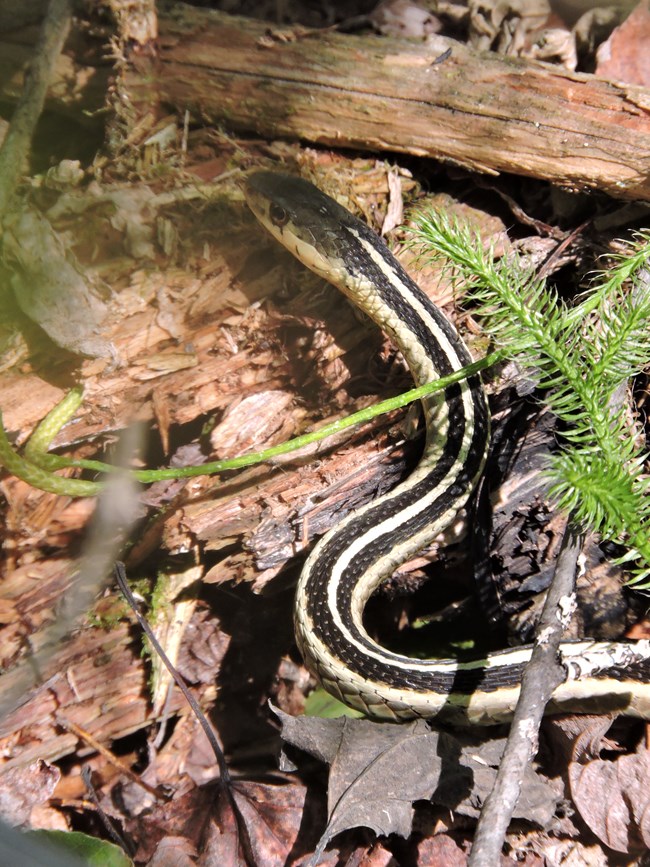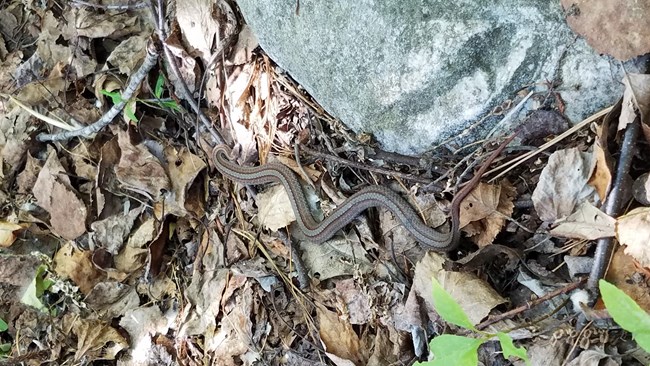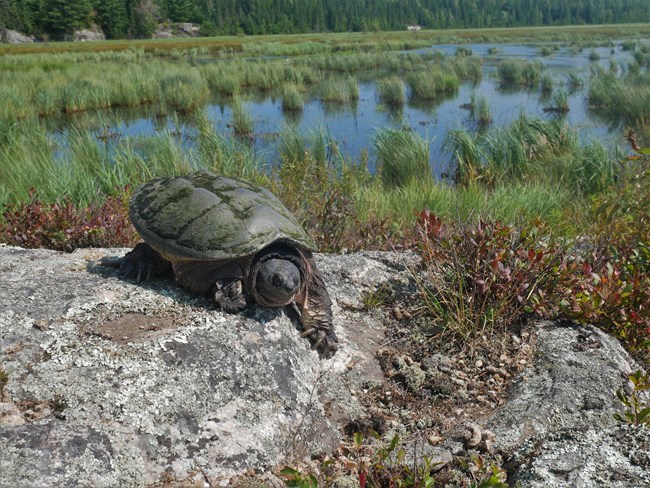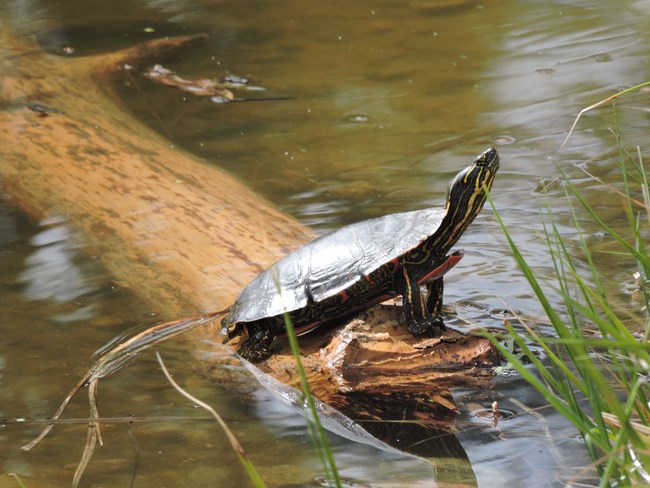|
Voyageurs National Park has four confirmed reptile species present in the park, with an additional two species suspected to reside within the park. Voyageurs National Park’s long, cold winters, and short summers are less than ideal for reptiles. Another factor contributing to low diversity is the relatively short period since the last glaciation, less than 12,000 years, which is not a lot of time for animals with low dispersal capability to move north and adapt to colder climes. 
Common Garter SnakeThe Common Garter Snake (also known as the Eastern Garter Snake) is the most common snake that you will find in the park. Garter Snakes, like all reptiles found in Voyageurs National Park, are ectothermic (coldblooded), which means that they cannot generate their own body heat effectively, so they need to absorb heat energy from their surroundings. You can find Garter Snakes sunning themselves in open patches of land and on rocks. Garter Snakes feed mostly on insects, amphibians, and earthworms, as well as small fish and mammals. Garter Snakes have a defensive behavior called musking, which means they release a foul-smelling liquid when alarmed. This helps to deter predators. 
David Hainlen Red-Bellied SnakeThe Red-Bellied Snake is a smaller snake present in the park. This secretive snake spends most of its time hiding under rocks, fallen trees, boards, tree bark and other objects, while occasionally coming out to sun itself. The Red-Bellied Snake is generally either gray-brown or reddish-brown on the topside, and the belly can range from yellow to orange to red to even pink! The Red-Bellied Snake grows no larger than 10 inches, with most snakes in the range of 6-8 inches. Their diet is made up mostly of earthworms, forest slugs, land snails, and small insects. Like Garter Snakes, The Red-Bellied Snake will release a foul-smelling musk when it is alarmed to ward off predators. 
Andrea Hynes Common Snapping TurtleCommon Snapping Turtles are the largest species of turtle found within the park. These turtles can grow to nearly 20 inches in length and weigh up to 35 pounds, although they average 11 inches and 13 pounds. Common Snapping Turtles eat quite the range of prey, including fish, frogs, birds, snakes, and small mammals, as well as eating aquatic vegetation. Snapping Turtles are also known to scavenge dead fish and mammals. These turtles will act defensively when on land, but in the water, they prefer to swim away from any confrontation. Look for these turtles on or near the water. They like to sun themselves on rocks, beaver lodges, etc. 
Western Painted TurtleWestern Painted Turtles get their name from their plastron, or lower shell, which has bright orange, red, and yellow markings on it, and their skin is streaked with yellow markings. Their diet comprises mostly small insects, crayfish, and aquatic vegetation. Like other reptiles, the Western Painted Turtle is ectothermic, and so it regulates its body temperature by basking in warm sunny spots. Look for this turtle basking on logs or rocks or swimming near the shore. Other ReptilesAlthough not confirmed within the park, it is believed that there is an additional species of garter snake, the Red-Sided Garter Snake, present. Northern Ringneck Snakes are suspected to be present within the park as well. |
Last updated: March 6, 2023
